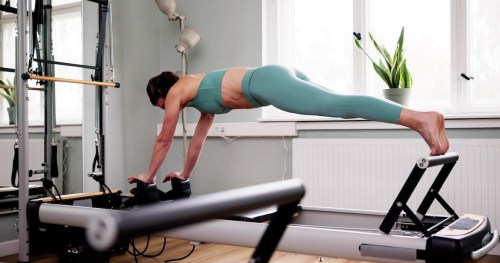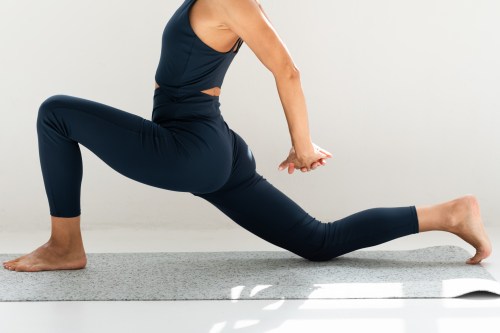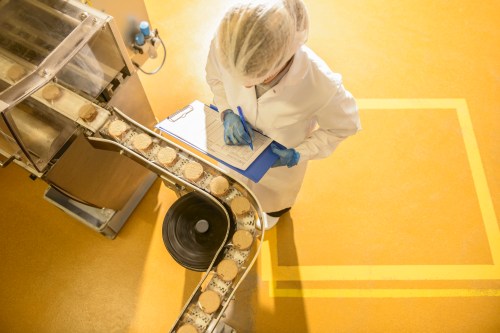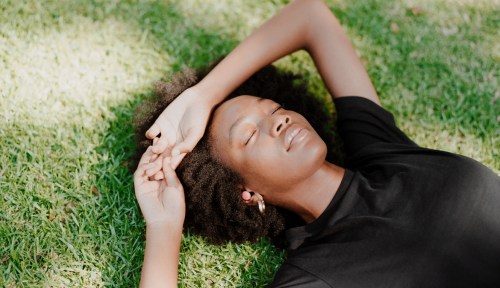You’ve decided you want to take up Pilates, so you start looking for a studio. As you skim through ClassPass, you realize there’s Pilates and there’s Lagree Pilates. What the heck is the difference, and which one should you choose?
Experts in This Article
a certified Pilates instructor
founder of Lagree Fitness and creator of the Megaformer and Microformer workout
master Pilates educator and owner of three Club Pilates studios in Florida
“The biggest and most obvious difference, in my opinion, exists between the Pilates reformer and the Megaformer used in Lagree. Other than both having springs and a carriage, they are almost entirely different in every other way,” says Kevyn Zeller, a certified Pilates instructor.
Both the Lagree Method and classical Pilates are great forms of exercise, but they’re not interchangeable. They can, however, be complementary to each other.
Ahead, Zeller, Sebastien Lagree, the inventor, CEO, and founder of Lagree Fitness, and master Pilates educator Shannon Willits share even more about the differences between the two workouts and offer tips on how to figure out which is the right choice for you.
What is classical Pilates?
Pilates is a form of exercise that uses a spring loaded carriage (called a reformer) to create resistance to train your muscles. It was invented by Joseph Pilates in 1926, but didn’t gain popularity until the ’90s. “The Pilates Method of Body Conditioning develops the body uniformly, corrects posture, restores vitality, invigorates the mind, and elevates the spirit,” Pilates famously said.
“Pilates, taught traditionally, is a system of exercises designed by Joseph Pilates that help to train and retrain neural pathways that exist between the brain and every muscle in the human body, which requires a significant amount of meditative concentration,” Zeller says.
Zeller explains that classical Pilates is often taught one-on-one (though you can find classes) with absolute attention to detail, precision, and control. It’s also performed mostly lying on your back and focuses on the push and pull of the springs to move the carriage. The springs can be adjusted to work with your fitness level.
What are the benefits of classical Pilates?
Pilates is a great low-impact workout. Because of that, many different groups of people can do it, including those with prior injuries.
“The individualized experience of Pilates is accessible to all populations and there isn’t anyone I’d ever tell to stay away from it,” Zeller says. “The equipment is designed to meet clients exactly where they are and support them as they heal injuries and develop uniform strength and increased mobility.”
There are many benefits to classical Pilates, according to Zeller:
- Improved balance
- Decreased pain
- Increased muscle tone
- Enhanced joint mobility
- Better posture
- Improved core strength
- Increased respiratory function
What are the drawbacks of classical Pilates?
While Zeller says there are no cons to classical Pilates, she does note that to reap the full benefits, it’s important to have a solid foundation and understanding of the method.
“If someone jumps into a class before they’ve developed the skills necessary to support the work with muscular integrity, there is potential for injury to occur,” she says.
Her recommendation is to start with a class for beginners and work your way up.
“Once you have a strong classical Pilates practice that you have honed and owned, it will forever be the gift that keeps on giving,” she says.
If you’re looking for something with higher intensity where you can really feel the burn, you may want to look into Lagree. For something that’s less intense, classical Pilates may be the move.
What is the Lagree Method?
The Lagree Method was invented by Sebastien Lagree in 2006. Lagree is a French man who came to the United States in the ’90s looking to become an actor. After being asked if he was a personal trainer at most of his auditions, he decided to put his own bodybuilding skills to work and start training people.
He began training his clients out of a Pilates studio (which, at the time, was gaining popularity in Hollywood) and was asked by the owner to teach Pilates as well. He had never heard of Pilates, but he decided to learn more about the modality.
Though Lagree liked the classical method, with his background and knowledge in bodybuilding, he saw an opportunity to add more strength training to it.
“If you look at the foundations of Pilates, there was nothing about training techniques or eccentric overload [a resistance training technique that focuses on the lowering phase of an exercise]. None of that stuff existed. It was not part of the vocabulary,” Lagree says.
So he implemented circuit training and a little bit of cardio to the resistance training coming from the weight of the Pilates equipment.
“When I saw the reformer, using the spring was not a foreign concept [to me]. I saw the spring as a hybrid between a weight and a rubber band,” Lagree says.
Thus, the Lagree Method—and the Megaformer—was born.
What are the benefits of Lagree?
Lagree challenges your muscles and helps to build and sculpt them. It improves endurance, cardiovascular fitness, body composition, flexibility, and strength. The tempo is reduced, and this creates the time under tension which forces you to integrate all of your muscles.
“You build total strength, and it’s a more holistic way of training,” Lagree says.
Part of what helps with muscle building is the carriage called the Megaformer. The Megaformer has springs and platforms on both the front and back (which can adjust to your fitness level) and handrails, which allow you to use the machine in ways that you cannot use a reformer.
“The Megaformer is more equipped to work against the spring, whereas the reformer has nothing to work against the spring because it was never the intent,” Lagree says.
What are the drawbacks of Lagree?
If you’re someone with a lot of injuries, you may want to steer clear of Lagree until you’re fully healed and back at your peak fitness level.
“You need a basic amount of fitness when you do this workout. It’s not for everyone,” Lagree says.
He also suggests not doing Lagree with sore, tired muscles because you need all the strength you have to balance, hold your movement, and be precise with those movements. Because Lagree is a combination of so many elements, you want to be as fresh as possible when doing it.
Lagree vs. Pilates: What’s the difference?
They may seem similar at first, but there are key differences between Lagree and Pilates. Both workouts utilize equipment that adds resistance, but the approach and design diverge significantly, according to master Pilates educator Shannon Willits, owner of three Club Pilates studios in Florida.
“The Pilates reformer is versatile and supports a range of motion with adjustable springs, allowing for a wide variety of exercises in multiple positions,” Willits says. “The reformer is particularly beneficial for creating balanced muscular engagement.”
On the other hand, the Lagree megaformer adds handles, pulleys, and heavier springs designed for continuous tension and minimal breaks, Willits says. Movements are often held for extended periods, requiring intense focus and endurance.
The Megaformer’s design brings Lagree into the “high-intensity, low-impact” category of exercise, aiming to push muscles to fatigue, Willits explains.
Lagree vs. Pilates: Which one is right for you?
Before you choose which workout is right for you, it’s important to note that many Pilates studios today teach a sort of mix of classical Pilates and Legree.
“Now, you have Pilates 2.0, you have high-intensity Pilates, modern Pilates, progressive Pilates. These are different ways of saying the workout is Lagree-based,” Lagree says.
If a studio doesn’t have the Lagree name included in the title, it’s not an actual Lagree class.
If you’re looking for something with higher intensity where you can really feel the burn, you may want to look into Lagree. For something that’s less intense, classical Pilates may be the move.
Lagree and classical Pilates are actually a great compliment to each other, and can both be a part of your weekly routine, according to Lagree.
“The best workout is a combination of things,” he says. So if you’re not sure which one to do, do both—there’s room for everything!
Sign Up for Our Daily Newsletter
Get all the latest in wellness, trends, food, fitness, beauty, and more delivered right to your inbox.
Got it, you've been added to our email list.










